Jeff Koons: The King of Kitsch
If there’s an artist who’s brought kitsch and pop art to another level, that person is without a doubt Jeff Koons.
With a portfolio extending from colossal sculptures and paintings to smartphone covers and life-size installations, everything Jeff Koons touches seems to turn into gold.
The artist boasts a long series of records and curiosities: his Instagram profile has an incredible following, he was briefly married to Ilona Staller, also known as Cicciolina, and has beaten virtually every auction record for a living artist.
Related: Jeff Koons is the Most Expensive Living Artist (Again)
Koons was born on January 21, 1955 in York, Pennsylvania to a furniture-seller father and a seamstress mother. Koons was a talented youth and studied painting at The School of the Art Institute of Chicago (SAIC) and Maryland Institute College of Art in Baltimore. After his studies, he found himself longing for the metropolis and moved to New York.
Career beginnings
While trying to establish himself as an artist in the city, Koons was often short of money and took other jobs. He spent some time as a broker on Wall Street and for a while worked at the information desk at MoMA. His first work of art to gain attention was created in the 1970s and embodied what we have come to know as Koons' characteristics: readymades and inflated toys.
Related: James Rosenquist: A Pioneer Pop Artist
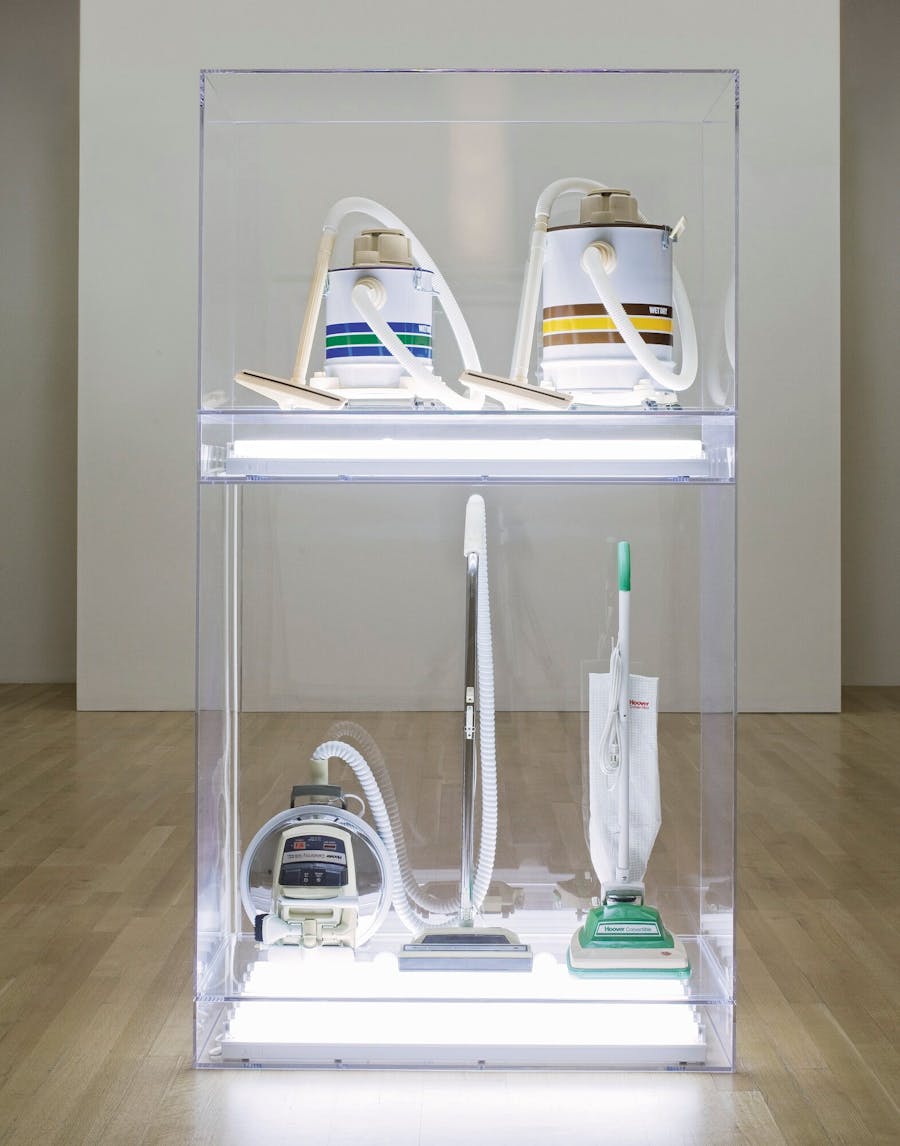
During his first active decade as an artist, Koons’ career skyrocketed. In 1980, the artist had his first solo exhibition at The Museum of Contemporary Art in New York City. The museum showcased Koons’ series ‘The New’, which consisted of a number of vacuum cleaners enclosed in a glass mount, illuminated by neon lights. By placing the vacuums in an unexpected context, Koons elevated these common, household products to the stature of high art, giving them new meaning and demanding respect from the viewer.
Between Warhol and Duchamp
Koons’ artistry is often compared with works created by artistic royalties Andy Warhol and Marcel Duchamp. In the spirit of Andy Warhol, Koons has both emphasized and further developed pop art as a concept. One example is the artist’s collaboration with Google in 2013, for which he designed a limited edition of smartphone covers.
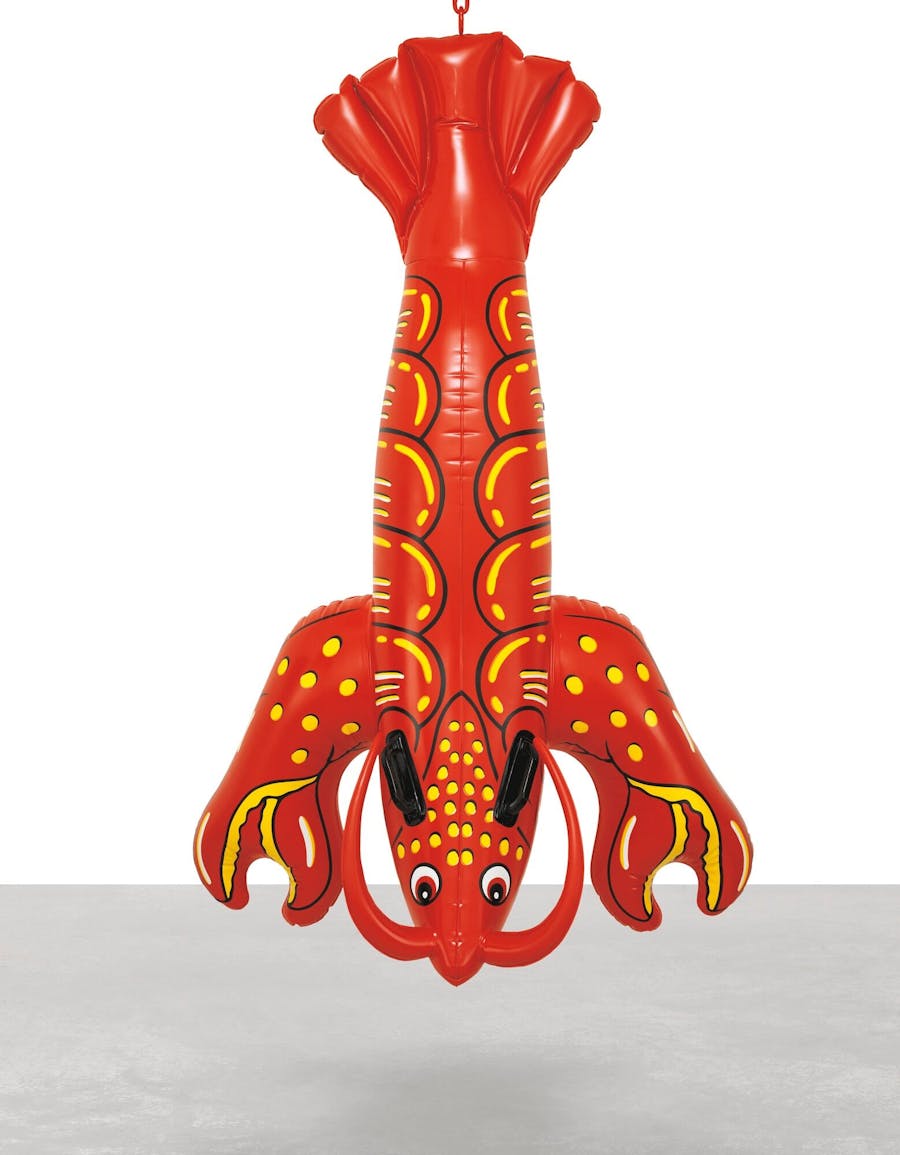
Inspired by Duchamp, Koons has taken the concept of ready-mades to another level. His works further reinforce the provocative position that an art form composes when the objects are re-conceptualized – their primary function is ignored and instead presented as art. During his solo exhibition in 1980, Koons announced that if the vacuum cleaners were actually used as they were intended, for cleaning, their artistic value would have been destroyed.
Made in Heaven
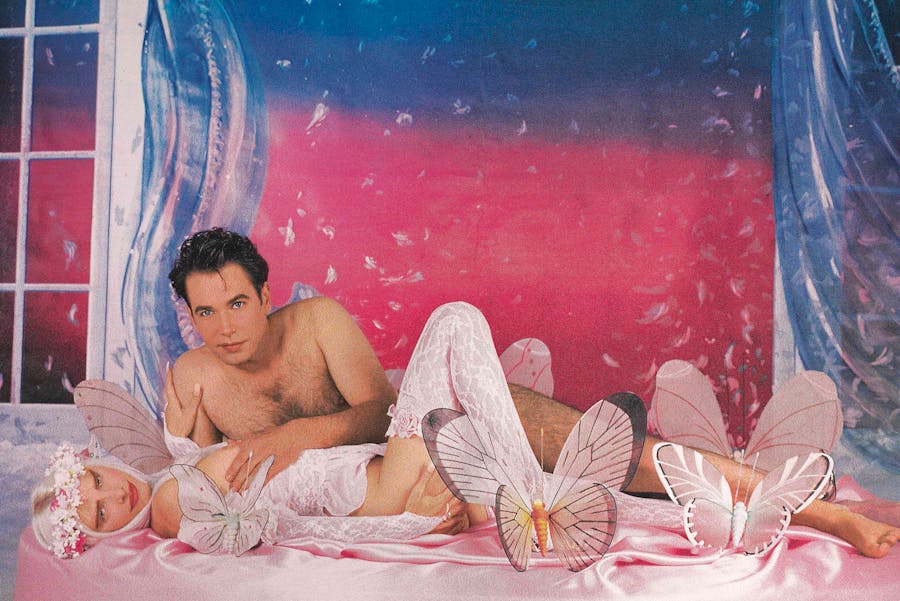
In 1988, Koons continued his artistic journey with his ‘Banality’ series, which included his famous sculpture of Michael Jackson with his monkey Bubbles. The work can be understood as a paraphrase on Warhol's persona with the issue of celebrity in the centre. These are themes that Koons has explored throughout his career: what constitutes celebrity and the relationship between the celebrity, the artist and the viewer.
Related: The First Works of 10 Famous Artists
In 1991, Koons married the Hungarian-born Italian Ilona Staller. Their marriage caused headlines for several reasons – Staller was a former adult film actress who had appeared in several pornographic films under the name Cicciolina, and together the couple created art. The series ‘Made in Heaven’ consisted primarily of erotic sculptures that depicted Koons and Staller in sexual positions. For Koons, the purpose of the series was to de-dramatize sexuality and to ask questions about shame and self-destruction in relationship to sex. ‘Made in Heaven’ was shown at the 1990s edition of the Venice Biennale. The marriage didn’t last long, however, and after the birth of their son the couple split.
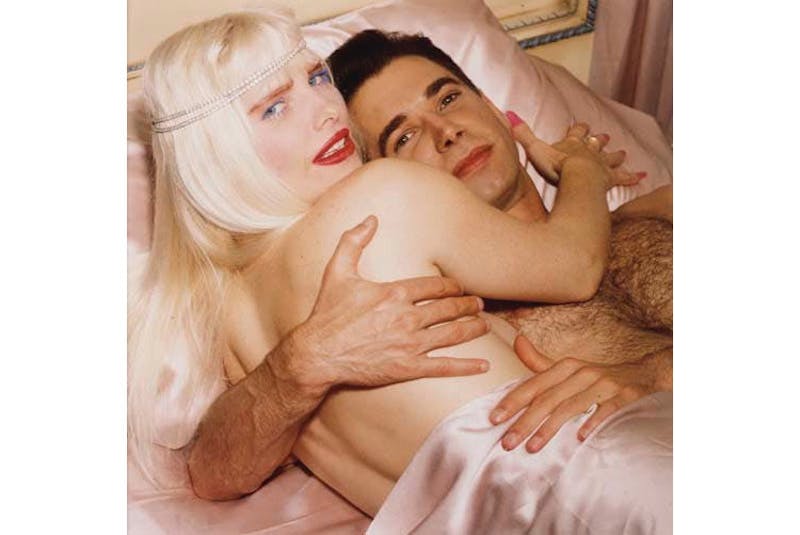
Records and controversies
Koons has broken several auction records during his lifetime. His world record is held by Rabbit, which was sold at Christie’s in 2019 (and which knocked David Hockney and his Portrait of an Artist (Pool with Two Figures) off the podium). With the price of $91 million, it’s the most expensive piece ever sold by a still-living artist.
Related: The 10 Most Expensive Living Artists
Koons' style comprises many features, including kitsch, popular culture and readymades. His way of raising the banal and the provocative has made him one of today's most popular artists. Both the public and private art collectors around the world reserve a special place for Koons. In an interview with The Guardian in 2015, Koons described his artistic ethos, "It's about educating people, and the way you can educate them is through your art. And I try to educate people about materialism through my work. I try to show them real visual luxury. It's intoxicating visually."
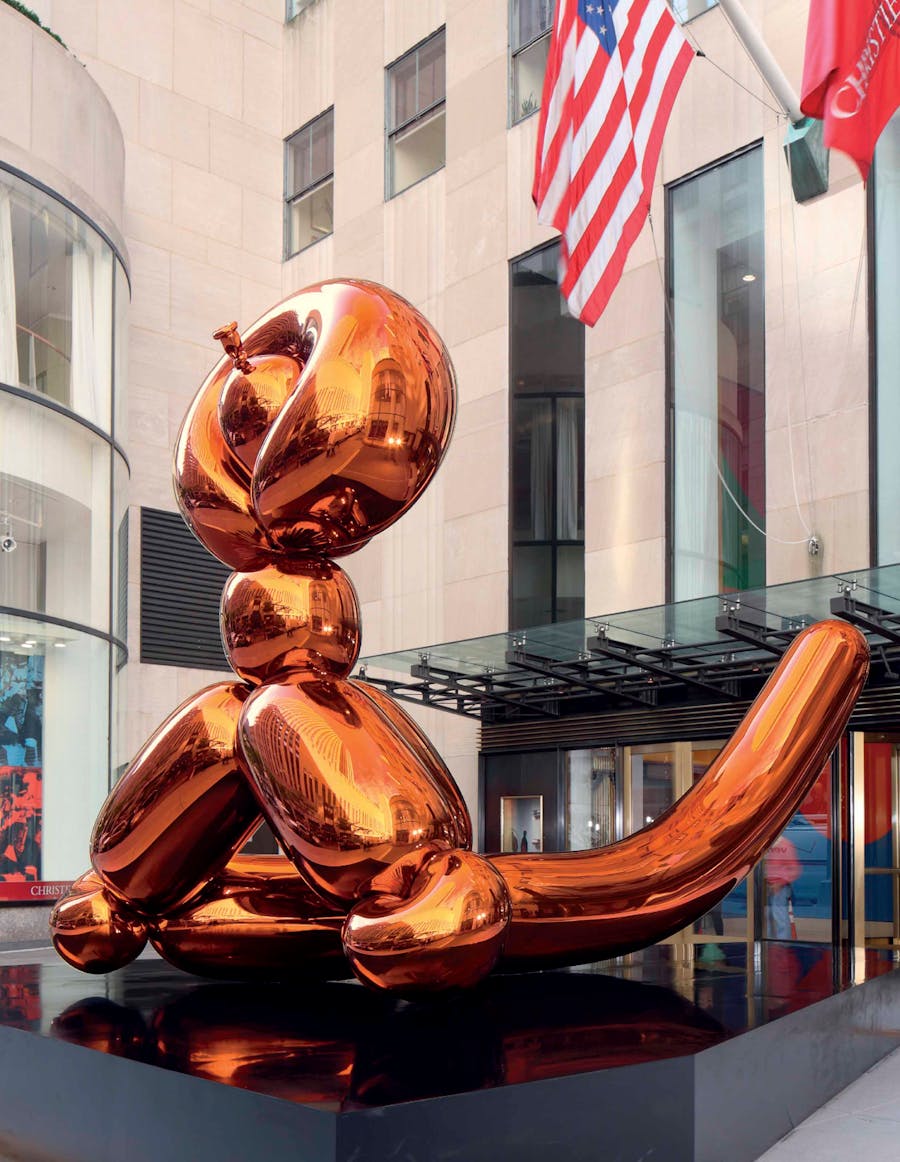
While Koons has achieved notoriety, he often endures serious criticism from the media, the art world and the public. Much of the criticism directed against him has been about the artist's alleged cynicism and banality – and great profits.
Related: The Ten Most Valuable Sculptures Sold at Auction
The controversy surrounding Koons has not diminished but, rather, increased during the years. When he offered his work Bouquet of Tulips as a tribute to the French state in memory of the 2015 terrorist attacks in Paris, the artist was met with angry reactions. Koons’ own idea was that the sculpture should be placed between the Musée d'Art Moderne de la Ville de Paris and the Palais de Tokyo.
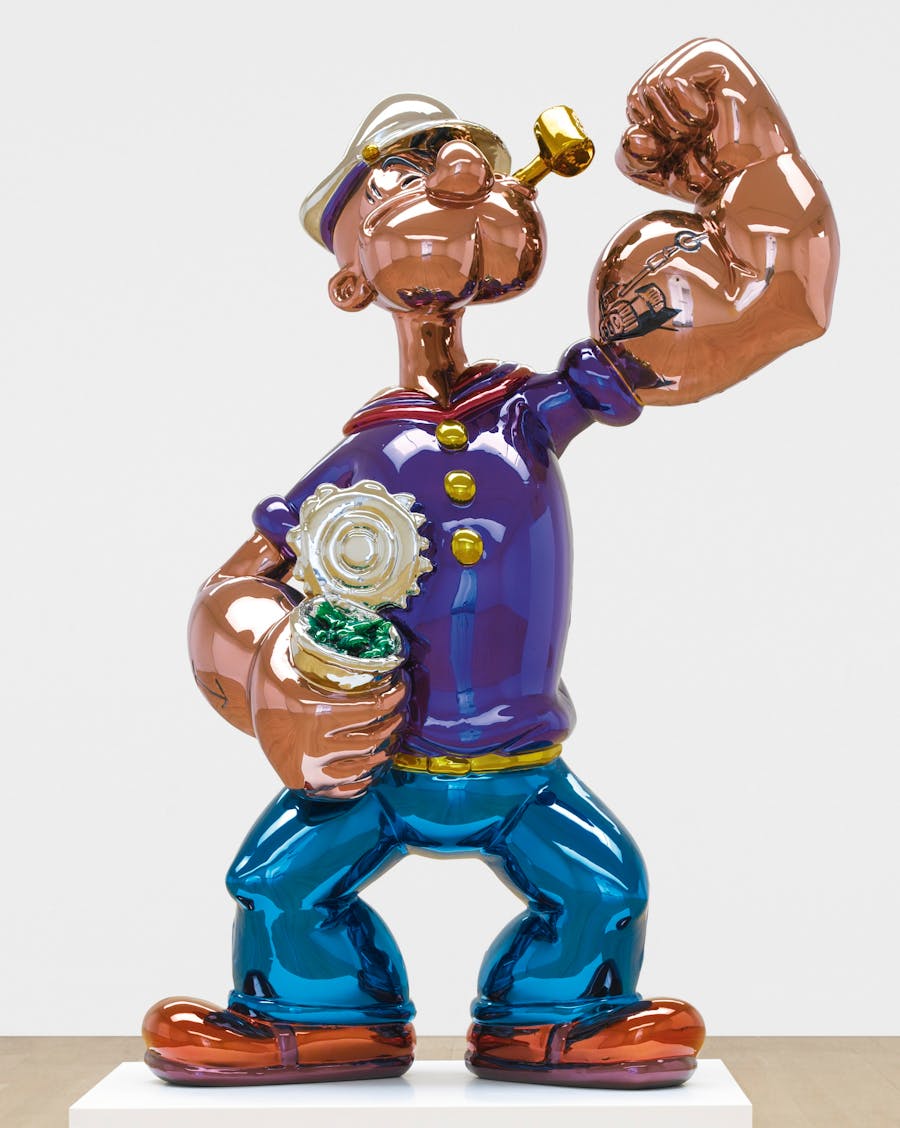
The city of Paris refused placement of the sculpture, not only because Koons’ choice of place wouldn’t work due to technical circumstances, but in an open letter in January 2018, around two dozen French intellectuals, politicians, artists, gallerists and art critics counteracted Bouquet of Tulips. In the letter, they defined Koons as cynical and endeavoring, whose gift was merely an unpleasant attempt at sensational headlines and publicity.
Related: Visitor Destroys Jeff Koons Sculpture at Miami Art Fair
One of the most divisive artists of the 20th century, Koons continues to generate strong reactions as he explores relationships between commercialism and fine art. Whether the viewer's response is positive or not, one thing is certain, Koons will certainly get your attention.


